SUBSCRIBE TO OUR NEWSLETTER
Don`t miss out on exclusive impact stories, updates about our work, research, and learning tips. Subscribe to Venture 2 Impact newsletter!

This article was co-written by Emilie Chiasson, Innovation & Design Consultant with the Aga Khan Foundation. Learn more about her work here: https://www.akfc.ca/ and here: https://www.emiliechiasson.com/
Disclaimer: We recognize that the term “international development” is flawed and promotes some harmful and colonialist views. We are in the process of researching and revising our use of the term and any alternatives, but in the meantime we will continue to use the term “international development,” for consistency and understanding.
Global challenges are increasingly complex, which means the responses must be equally complex. Many organizations, agencies, and programs are looking to innovation and human centered design to develop community-led solutions. But when innovation and design practitioners are looking to transfer into the international development sector, it can be difficult to adapt and ensure your process is reflective of the needs and motivations of the impacted communities.
We sat down with Emilie Chiasson, Innovation & Design Consultant with the Aga Khan Foundation (AKF), and co-created a list of 4 key things to consider when innovating in international development, along with examples from her work.

An essential element of design is the ability to examine things from different perspectives, identifying blind spots and potential negative impacts, particularly when working in international contexts. Building diverse experiences and identities into your project team from the outset will help ensure project success.
In my capacity as a Design and Innovation Advisor with the Aga Khan Foundation (AKF), I’ve been designing design processes and teams based on a number of key factors, such as the availability, motivation, and expertise of the desired stakeholders. If a person does not have the availability and motivation to participate, then they will not contribute to the level required for a successful co-creative and iterative human centered process.
From an expertise perspective, it’s important to recognize that there are varying but equally valuable areas of expertise. For example, lived expertise, design expertise, and technical expertise. Finding a balance of these three is essential, to allow design teams to not work “outside of the box,” but along the edges of the box. Edge-of-box thinking allows for context and resource relevant solutions.
This mix also allows for increased exposure leading to more well-defined problem frames and solutions outside of one’s immediate surroundings, leading to less surface level thinking of one’s problem or idea. While this diversity of expertise may not always be readily available in every design team, that is why technical and design coaches play a critical role, which I will speak to more later.
Currently, through a five year project funded by Global Affairs Canada in Tanzania, Kenya, and Uganda, we are testing different design team compositions to validate our assumptions related to the importance of availability, motivation, expertise and power dynamics.
For example, the teams in Uganda will be adolescent boys and girls only, while in Tanzania, we will have teams that are composed of adolescents, parents, teachers, and community leaders. Through this, we will further assess the dynamics to understand whether mixed-demographic teams enable or discourage ownership, participation and solutions that are desirable, feasible and viable.

When working with a community for social change, you are trusted with safeguarding the wellbeing and best interests of the people experiencing the most vulnerability in that community. The most well-intentioned projects can harm peoples’ health and wellbeing if the larger picture is not taken into account – for instance, providing small grants to women in low-income communities can create positive impact, but it might also single out those women as targets for gender-based violence (GBV).
Emotional wellbeing is just as important as physical wellbeing; be very clear about setting realistic expectations for success, instead of promising the moon. Children and adolescents in particular often experience emotional and physical vulnerability, so planning programming with their perspectives in mind is key to ensuring their wellbeing.
When working on women’s economic empowerment issues, especially if the solution is new or slightly disruptive, the intervention must address factors affecting both demand and supply. From a demand perspective, the “market” or environment surrounding the women and girls, such as men and boys and community/religious leaders, must be made aware and supported to engage in the solution (one of the pre-conditions to empowerment, others might include resources, and social capital). If not, you risk exacerbating harm faced by women and girls where they are further exposed to GBV.
From a supply perspective, it is not enough to “empower” a woman and girl through skill development; one must also consider their agency, confidence, and ability to make choices. Therefore, a skill-development program should always incorporate components of confidence-building and agency development. CARE Canada has an amazing Women’s Empowerment Framework that I would suggest exploring further.

Navigating complex power dynamics is part of life, especially when working with groups who are diverse across age, race, class, gender, and experience because there are more intersecting factors to consider.
Aim to shift these power dynamics to be more equitable through your design process; remember that you are working in service of the local community, and engage them meaningfully throughout the design process as you uncover needs, brainstorm ideas, and test solutions. Not only does this create community ownership of the final product or program, it ensures that the impacted community holds the power to create their own change.
Be mindful of this in all aspects of programming; both the person facilitating and the language used can reinforce harmful stereotypes and make others uncomfortable. For instance, it may be inappropriate in some cases for a man to facilitate programming for women and girls, particularly if it is on a topic relating to sex or menstruation.
One of the main programs I support through my work with AKF, AGENCI (Adolescent Girls Education in Crisis Initiative), is working to tackle barriers to girls’ access to quality education. One of the key activities of the program is a gender equality campaign.
As opposed to using a higher level communication consultant to develop the messaging and communication products, we engaged a group of mostly girls and a few boys to co-create the problem frame, campaign identity, messages, and products, so that they are not only the designers but the champions bringing these messages to their peers.
As a result, the girls have been our clients and we are acting in service of them, with decision making authority in their hands. The adolescents and young people have just finished working with a local music producer to develop a song, to bring music to their campaign, Olu Alu (meaning togetherness in Madi, the local dialect in Moyo, Uganda). Stay tuned for the song and campaign’s full release later this year.
Innovation is not a one size fits all process – it’s all about learning and growing from the past!
Not only do our design processes need to include feedback and iteration, but the way we approach innovation and design does as well. Be open to the fact that what is considered the “best” way today might not be tomorrow, and allow your processes and approach to grow and evolve to best suit the current context. Continue to prioritize the values, needs, and motivations of the impacted community as you co-design solutions.
All in all, don’t assume that your way is the best way. Learn from the mistakes of the past, and support, don’t direct.
Design is a major component of the Aga Khan Foundation’s work, which is why we have and will continue to make serious investments in the iterative approach to our understanding, processes, and resources related to design across our Portfolio.
One of the most significant changes we made, through learnings from AGENCI, is the important role of design coaches. After an immersive 3-4 day design process, when teachers, adolescents, or other communities were invited to test and generate evidence for the desirability, feasibility, and viability of their idea prior to scaling, we noticed a particular gap in teams’ competency related to continuous testing, learning, and iterating.
While we made changes to the design process to bridge this gap, we have also realized that it’s even more beneficial to provide teams with a design coach, to support them both during the workshop and for the 11 weeks after the design process. In doing so, each team has a design coach to bounce ideas off of, build their confidence with, and work through their next testing or iterating step.
While we are still testing our assumptions around design coaches, we have already seen a higher success rate of design teams and prototypes transitioning from a Minimum Viable Product to a Minimum Awesome Product, and beyond!
To conclude, innovation and design are complex practices that require constant re-evaluation and improvement, but that offer far greater potential for impact. Make sure you do your research, and most importantly, listen to those who you are working to serve.
Check back in for part 2!
Don`t miss out on exclusive impact stories, updates about our work, research, and learning tips. Subscribe to Venture 2 Impact newsletter!
